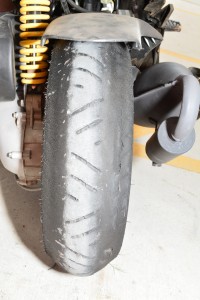Ever wondered what happens to your old motorcycle tyres when you replace them? Of the 48 million used tyres disposed of each year, two out of every three goes to landfill, is illegally dumped, sent overseas or simply stockpiled. Only 16% is recycled.
However, the tyre industry has announced recycling plans that include making the roads you ride on more safe by using old tyres in road materials that make them stickier. Environment Minister Greg Hunt has announced the Tyre Product Stewardship Scheme to explore the potential for new industries and products from recycled tyres. It will also improve the collection and recycling processes and the reduction of unsustainable disposal practices.
About three-quarters of a tyre is rubber, the rest is mainly steel and textiles. About 95 per cent of all used tyres are left at the tyre dealer where they are stockpiled for collection. The problem is there is no large-scale recycling program available, so the tyres are stockpiled or illegally dumped which they become breeding sites for mosquitoes and vermin. If they are used in landfill, they take ages to degrade, meanwhile creating potential fire hazards and collect landfill gases.
Sending the problem overseas is also an environmental disaster as many countries burn old tyres for fuel.
Major tyre manufacturers Michelin, Yokohama, Continental, Goodyear-Dunlop, Toyo and Pirelli have financially backed the establishment and the initial operation of the Tyre Stewardship Australia. The voluntary scheme, authorised by the Australian Competition and Consumer Commission, will focus on promoting innovative use of tyre-derived products and development of new markets, as well as educating industry and the public about the benefits of sustainable recycling. Apart from old tyres being used to make safer, stickier road surfaces, they can also be used for soft fall playground surfacing, brake pads, industrial and commercial flooring, explosives, or in civil engineering and for fuels for energy recovery.


